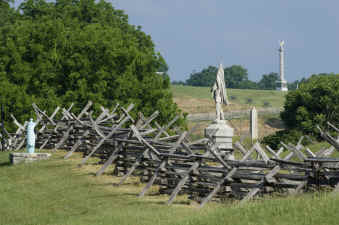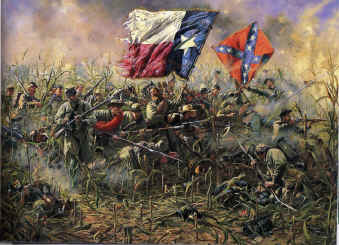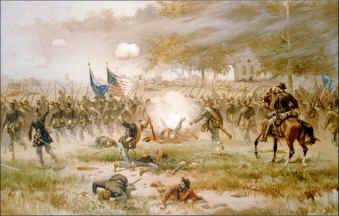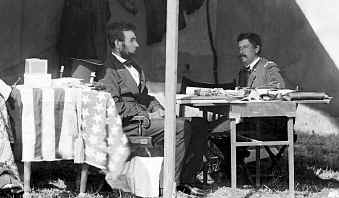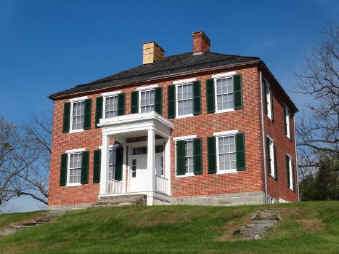|
Antietam National Battlefield
Some who visit the site today claim that as they walk the fields they can sense the presence of the men who fought and died here. This battle also marked a pivotal moment in the Civil War as the retreat of the Confederate forces opened the door for President Abraham Lincoln to issue the Emancipation Proclamation and it catapulted Clara Barton, founder of the American Red Cross, onto a national stage for her unstinting care for the wounded and dying. THE PAST
The battle began at dawn on that fateful day and lasted long into the evening - some 12 hours in all. The Union troops first attacked the Confederate left, but McClellan's plan was soon lost in the heat of battle and the soldiers advanced in a disorganized manner. Combat was horrific with men shooting wildly, cannon booming, horses terrified at the sounds and smells, and the dust and dirt of the cornfield spraying in men's faces.
Notes drawn from Clara Barton's papers at the Library of Congress, give a feel for the "terrible sense of oppression," that was felt. Barton, who was at the rear of the Union army, comments that "the road was filled for ten miles with a solid moving mass," as the soldiers maneuvered into position. As the left (sic) was being attacked, the Union forces under Maj. Gen. Ambrose Burnside entered the conflict with the Confederates on the right. The bridge he took still bears his name. But, further advance was interrupted as additional Confederate troops under Confederate General A.O. Hill arrived from Harper's Ferry. McClellan's plan fell apart, and despite the enormously high rate of casualties, many Union troops never even entered the battle. As the attacks raged, Barton and her aides were trying to care for the wounded. "We have no more chloroform, no more bandages, nor lint, no more liquor, nothing," she stated in her account of the battle. Only rough corn leaves were left with which to bind the men's wounds as they stood in line for care, a line which "stretched out for five miles," according to Barton. The next day, both armies scoured the fields for their wounded and dead and that night the Confederate forces retreated into Virginia. This was Lee's first invasion of the north. His final attempt at Gettysburg would also end in failure. THE RESULT
The Proclamation was not a law passed by Congress, but rather an executive order directly from the President. Nor did it cover all the slave-owning states, several, for various reasons, were exempt, such as the area of Virginia that would eventually form its own state of West Virginia. Clara Barton (1821-1912), a teacher by training, originally moved to Washington, D.C. where she served as a volunteer helping the wounded. She soon left the safety of a hospital building to go out into the field to help the soldiers directly. At the Battle of Antietam, she brought three wagonloads of supplies and organized some able-bodied men to help care for the wounded, even preparing food. Her presence among the troops led to her being called, "The Angel of the Battlefield." After the war, she went to Europe where she saw the work of the International Red Cross and upon her return to the United States, founded the American Red Cross Society in 1881. PRESENT
The Visitor Center contains exhibits about the Battle and the Civil War in general. It is open seven days a week, except for Thanksgiving, Christmas Day, and New Year's Day. Ninety-six monuments representing regiments, states, and individuals (including one to Clara Barton), as well as one dedicated to war correspondents, grace the battlefield. An annual event, now in its 31st year, is the Maryland Symphony Orchestra’s Salute to Independence, which also hosts a fireworks celebration. It will be held on July 1, 2017. In December, an illumination ceremony is held at the Battlefield with 23,000 candles lit, one for each soldier killed, wounded, or missing. This year it will be held on December 3, 2016. Also to be seen at Antietam is the Pry House Field Hospital Museum, which is located in the building that served as General McClellan's headquarters during the battle. Lincoln visited the house two weeks after the battle. For more information, visit the website at www.nps.gov/ancm. |
